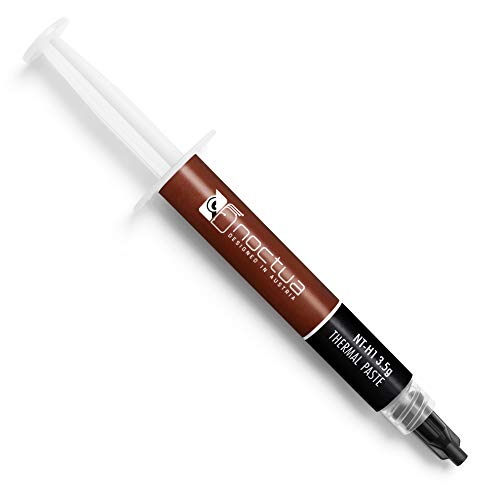Understanding Thermal Paste: What Is It and Why Do We Need It?
What is Thermal Paste?
Thermal paste is a thermally conductive adhesive that is applied between the CPU (Central Processing Unit) or GPU (Graphics Processing Unit) and the heatsink. Its primary purpose is to fill in the microscopic imperfections on the surfaces of these components, ensuring efficient heat transfer. Imagine trying to connect two rough, uneven surfaces; the gaps would trap heat, leading to potential overheating. Thermal paste acts like a bridge, facilitating the flow of heat away from the processor and into the heatsink.
The Importance of Thermal Paste
Without adequate thermal paste, your processor could overheat, which might lead to performance drops, system instability, or even hardware damage over time. It’s similar to how engine oil keeps a car’s engine running smoothly; it ensures that everything operates as it should, reducing the risk of overheating. Thus, applying the right thermal paste is crucial for maintaining an optimal performance environment for your computer.
How to Choose the Right Thermal Paste for Your Needs
Consider Your Use Case
When selecting thermal paste, think about how you’ll be using your computer. For gamers or anyone running demanding applications, a high-performance thermal paste can make a difference in keeping temperatures stable. However, if you’re an everyday user who doesn’t push your system hard, a basic thermal paste will likely suffice.
Evaluate Thermal Conductivity
Thermal conductivity is a key specification and is usually measured in W/mK (watts per meter-Kelvin). Higher numbers indicate better heat dissipation. For example, thermal pastes with conductivity ratings of around 5 W/mK are great for high-performance needs, while those around 2-3 W/mK are suitable for standard usage. Choose based on your performance requirements and technical proficiency.
Assess Viscosity and Application Method
The viscosity of thermal paste affects how easily it spreads and how well it fills gaps. Thicker pastes might provide better durability, while thinner pastes can be easier to apply. If you’re new to thermal paste application, opting for one with a syringe or applicator that offers precision can simplify the job and ensure even distribution.
Applying Thermal Paste: A Step-by-Step Guide
Preparation is Key
Before applying thermal paste, ensure you gather the necessary tools: a small tube of thermal paste, isopropyl alcohol, a lint-free cloth, and possibly a plastic spatula. Start with turning off your computer and disconnecting it from the power supply. Remove any existing thermal paste from the CPU or GPU surface using the cloth dampened with isopropyl alcohol.
Applying the Paste
Once the surface is clean and dry, it’s time to apply the thermal paste. A common method is to place a small pea-sized dot of paste directly onto the centre of the processor. This amount is typically sufficient; too much paste can impede heat transfer rather than help it. When you secure the heatsink back on, the pressure will spread the paste evenly across the surface.
Final Steps
After applying the paste and reinstalling the heatsink, ensure all connections are securely in place before turning your computer back on. Monitor the temperatures for a while using software tools to verify that everything is functioning correctly. It’s a straightforward but vital process that helps maintain your computer’s performance.
Top Recommendations for Thermal Paste on the Market
High-Performance Options
For users seeking exceptional thermal conductivity, options like Arctic Silver 5 or Noctua NT-H1 are highly regarded. These pastes excel in demanding applications, making them ideal for gamers or content creators who need to keep temperatures low during extended use.
Budget-Friendly Choices
Those looking for economical options without sacrificing too much on performance could consider products such as Arctic MX-4 or Thermal Grizzly Hydronaut. These brands provide a good balance of cost and efficacy, making them suitable for general use while still performing adequately under load.
User-Friendly Choices
If you’re new to applying thermal paste, choices like Cooler Master MasterGel or Prolimatech PK-3 are designed to be easier to apply and clean. With features like a syringe applicator or pre-formed designs, they simplify the application process, ensuring that users can achieve reliable results even without experience.
Maintaining Your Thermal Paste: When and How to Reapply
Regular Checks
Over time, thermal paste can dry out or degrade, impacting its effectiveness. We recommend checking it during regular cleaning sessions or hardware upgrades. If you notice elevated temperatures or performance issues, consider reapplying the paste to restore optimal heat transfer.
How to Reapply
Reapplying thermal paste involves similar steps to the initial application. Start by carefully removing the old paste with isopropyl alcohol and a lint-free cloth. Follow with applying a fresh dot of thermal paste before re-attaching the heatsink. Regularly maintaining this small detail can significantly increase the lifespan and reliability of your components.

































